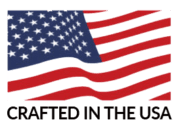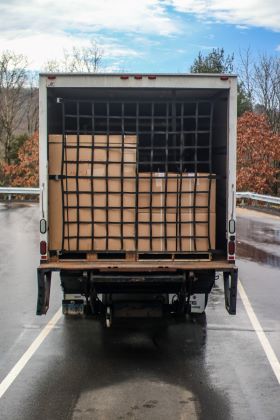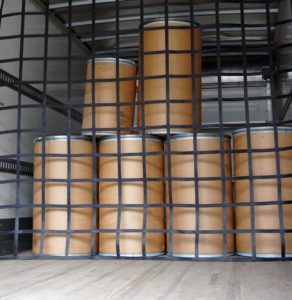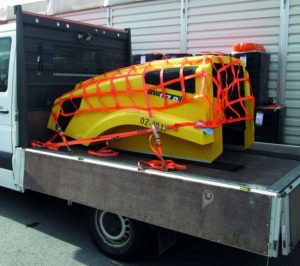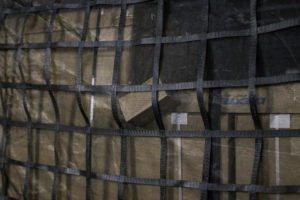Freight Handling Safety
Freight transportation safety is a wide-ranging topic, and a very necessary one given the incredible volume of freight movement involved in today’s consumer-driven economy. While most people do not have a sense of the US transportation industry’s immense scale, most of us rely on freight and logistics for nearly all of our daily resources. Promoting safe practices in such an important and massive industry touches the vehicles, employees, products, and legislation involved, and while we can’t possibly speak to all of these topics in one article, we can pull out a single piece to examine in closer detail: the safety requirements and solutions involved in freight load handling safety.
National Freight Truck Volume
According to the US Department of Transportation’s Bureau of Transportation Statistics, the US freight industry moved a daily average of about 51 million tons of freight valued at more than $51.8 billion in 2018 (the latest year we have data available for). The majority of this volume was moved by freight truck (approximately 60%) during 2018, and is on track to increase over 30% in volume by the year 2045.
Most freight deliveries occur within a travel distance of 100 miles or less from origin to destination, followed by the next-largest proportion traveling between 100 and 499 miles. Less than 10% of all freight deliveries travel coast-to-coast or in similar distances (IE 1,500 to 2,500 miles). What this tells us is that most material transportation occurs by ground, using small- to mid-sized delivery trucks headed across town or a few towns over. We might assume that delivery transportation of this scale occurs in mixed-cargo, common carrier, and multi-stop fashions, with an emphasis of ‘drop and run’ daily deliveries, as opposed to 52’ long-haul freight tractor trailers. Keep this image in mind for a moment as we’ll come back to it after the next segment.
Freight Handling Safety Concerns
The Federal Motor Carrier Safety Administration (FMCSA) has issued a guidance standard titled Cargo Securement Rules, which serve to address recent increases in freight accidents caused by mishandled cargo. Accidents in freight transportation certainly run the gamut of risk types, from vehicle accidents to driver medical emergencies, but improper cargo handling was found to be tied to so many accidents that specific attention on this sole factor was deemed necessary. Cargo-related accidents stem from such causes as:
- Improper tie-down
- Materials not being in contact with each other, creating void space for movement
- Center of gravity and weight shifting, causing load instability
- Poor cargo positioning (such as excess weight past a vehicle’s rear axle) and uneven weight distribution
- Use of unapproved, under-rated or non-rated tie-downs
- Overloading vehicles
- Incomplete load-checking and coordination between drivers and loaders
- Materials falling through doors leading to employee injuries
So, we have two topics above to now put together: a very high proportion of freight handling delivered in local, fast-paced routes, and a list of very high risk factors associated with poor cargo handling. Might these two topics be related? We argue that they are.
We can easily imagine that with such high volumes of freight traffic occurring in short spurts, drivers are compelled to favor speed over diligence in completing their routes, which can and does translate directly to less attention given to securing and restraining loads. The impression that quick, local routes carried in smaller box trucks and vans are less risky than full truck loads crossing the country can give a local driver a false sense of security, while the fact is that cargo-driven accidents are many times more likely (and are just as harmful) to occur based on the sheer volume of these short-route runs occurring every day.
Promoting Freight Safety
Commercial delivery and freight handling businesses should consider developing a well-rounded Safe Freight Handling Program for their business. Include all usual program facets from risk assessment, training, continuous improvement, and complete documentation. Safe Freight Handling programs should combine OSHA-compliant safe work practices, CFR-complaint freight securement requirements, as well as specific solutions that may be required with your particular material, packaging, or product types being hauled. You can visit websites such as CFR Transportation Safe Operation (specifically Subpart I – Protection Against Shifting and Falling Cargo), California DMV Commercial Driver Handbook (or your state’s DMV / other agency that governs commercial driver’s licenses), and FMCSA Cargo Securement Rules for more information.
In short, the general requirements for securing freight materials (from 49 CFR 393) are:
- Cargo must be firmly immobilized or secured on or within a vehicle by structures of adequate strength, dunnage or dunnage bags, shoring bars, tiedowns, or a combination of these.
- Articles likely to roll must be restrained and prevented from rolling.
- Articles placed besides each other and secured by transverse tiedowns must either be touching or otherwise prevented from shifting while in transit.
- The aggregate working load limit of tiedowns used must be at least one-half times the weight of the secured load.
- Load securement can be achieved with synthetic strapping, steel strapping, chain, webbing, wire rope, cordage, or similar approved devices.
Freight Truck Netting
A common solution used to meet the above safety requirements can be found in InCord’s Truck Nets, our line of synthetic fabric webbing nets that are designed to easily secure, separate, and retain materials during shipment.
Truck Nets are manufactured using 1” polyester webbing for maximum strength and minimal stretch, typically provided in 8” mesh square spacing and in black or high-visibility colors. Our common net sizes fit spans from 96” to 104” trailer widths, and are secured with either E-Track or cam buckles, able to be sinched down taunt. Custom sizes, web patterns, thickness, materials, colors, and load ratings are available to meet your exact needs.
The most common uses of InCord’s Truck Nets are as follows:
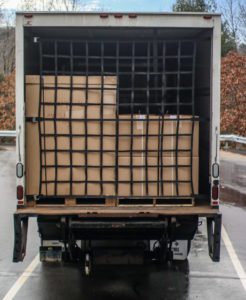 | Truck Door Protection Unsecured loads often shift and slide around during their travel, even tipping to bear weight on trailer doors. Stacked boxes, tall top-heavy objects, and free-form loose materials can all find their way to resting against a door, and once the door is opened, will fall directly on unsuspecting employees. Spanning Truck Nets across side and rear door openings helps to fully retain materials to the truck bay, protecting employees from falling objects when opening doors.
|
| Load Segregation Multi-drop and common carriers routinely haul mixed loads of dissimilar products, where keeping order groups separate and organized is critical. In some cases, validated loads even required lockable means of segregation between groups, ensuring separation from portal to portal. Truck Nets can be clipped into E-Tracks, anchor points, and floor hooks anywhere in the trailer to provide material segregation and partial-load securement. Truck Nets can be secured with pad locks to meet locked-segregation requirements as well.
|
| Load Tie-Down Too often, freight haulers rely on the physical weight of their cargo to hold itself in place during transportation. Loads that do not provide a natural place to connect a tie-down or block still need a means of securement, especially when they’re heavy. The inertia of a shifting load can be enough to destabilize a vehicle in motion, break through the sidewall of a trailer, or even cause a tip-over. Especially useful for odd-shaped objects and unwrapped box stacks, Truck Nets can be used to secure loads over the tops and sides down to floor anchor points, retaining them in place. |
| Optional Debris Liner Our debris liner inlay option provides additional protection when containing small and free-form materials. |
About InCord
InCord manufactures custom safety netting solutions and lifting and rigging products for a range of industries. Our woman-owned Colchester, CT manufacturing plant is an ISO-9001 certified facility, housing a team ready to design and fabricate a unique netting solution to fit your needs. InCord was founded in 1995 and is a Connecticut Top Workplace. To discuss an application, request a quote, or obtain technical guidance, please call us at (860) 537-1414, submit a request here, or email us at netting@incord.com.


